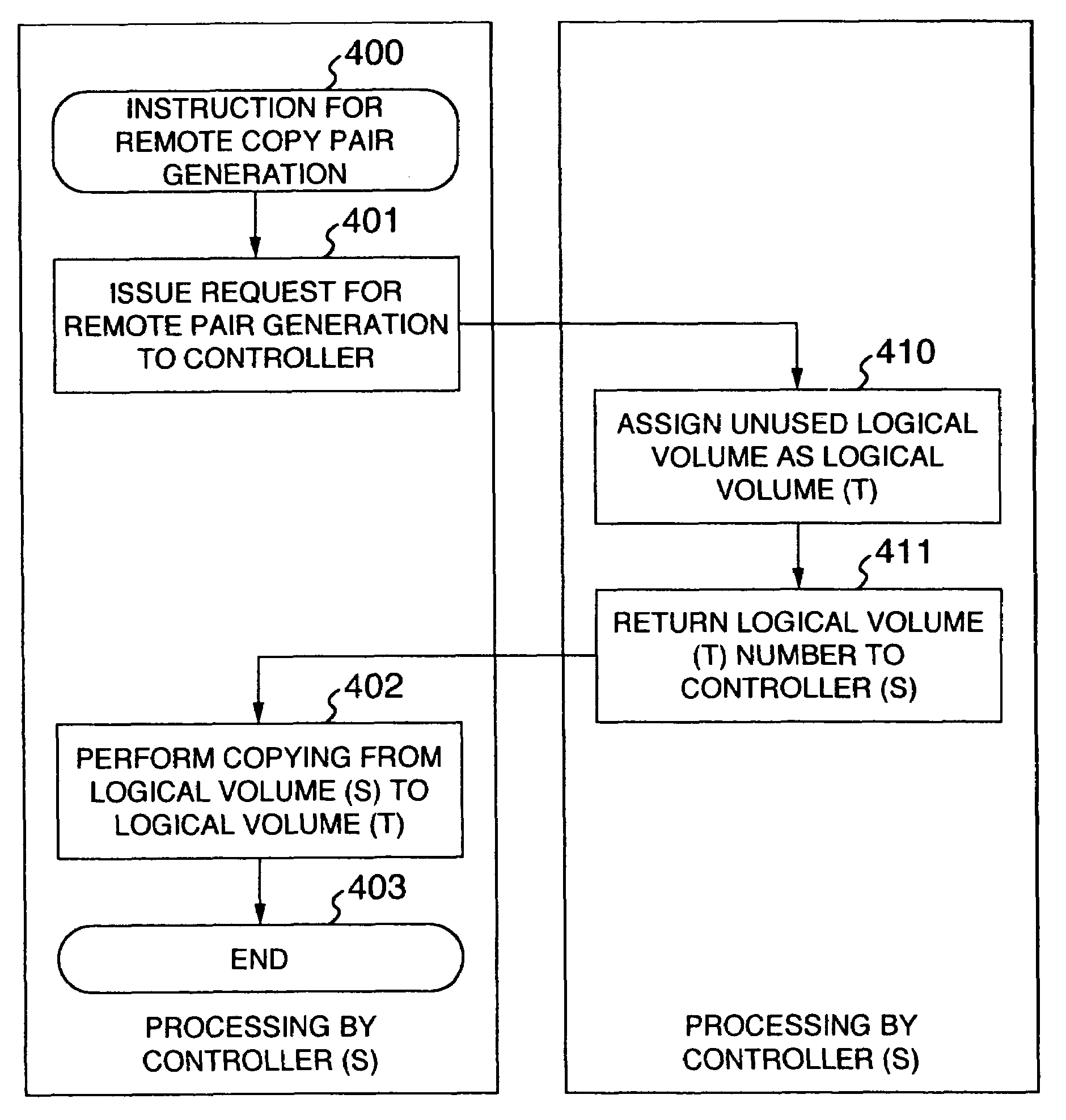Storage system
a storage system and storage system technology, applied in memory systems, redundant hardware error correction, instruments, etc., can solve the problems of deteriorating the response time of cpu and throughput of storage systems, essentially unnecessary cost burden for cpu and storage systems, and similar problems of conventional remote copying techniques, so as to reduce extra load and time
- Summary
- Abstract
- Description
- Claims
- Application Information
AI Technical Summary
Benefits of technology
Problems solved by technology
Method used
Image
Examples
first embodiment
I. First Embodiment
[0077]First, the description will be made of a first embodiment of the present invention.
[0078]The first embodiment concerns remote copying. FIG. 1 shows an example of the construction of an information system in which the remote copying is performed.
[0079]One or more CPU's 120 and one or more storage systems 100 are arranged at a primary site where a main service is performed.
[0080]The CPU 120 executes an application program to issue a request for input / output of data of a logical volume 104 to the storage system 100 of the primary site. The logical volume 104 is logical storage devices which are recognized by the CPU 120.
[0081]The storage system 100 is connected to a storage system 110 of a secondary site through one or more inter-controller paths 160. The storage system 100 is composed of one or more controllers 101 and one or more storage devices 103. The controller 101 performs the transfer of data between the CPU 120 and the storage device 103. In the contro...
second embodiment
II. Second Embodiment
[0149]In the second embodiment, there is performed migratory copying in which data migrates between new and old storage systems.
[0150]The description will now be made assuming that the migratory copying from a storage system 1100 to a storage system 1000 is performed, as shown in FIG. 7. The storage system 1000 serving as a copy destination has a controller 1010 and storage devices 1030, and the storage system 1100 serving as a copy source has a controller 1110 and storage devices 1130.
[0151]In the following, the storage system 1100 serving as the copy source and the constituent elements thereof will be denoted with (S) and the storage system 1000 serving as the copy destination and the constituent elements thereof will be denoted with (T).
[0152]At an initial stage in the case where the migratory copying is to be performed, a CPU 1200 is placed in a state connected to the storage system (S) 1100, that is, the storage system which serves as the data migrating cop...
third embodiment
III. Third Embodiment
[0165]In the third embodiment, a logical volume is distributively arranged / rearranged on a plurality of RAID groups.
[0166]FIG. 9 shows the construction of a storage system according to the third embodiment.
[0167]As shown, a storage system 1001 according to the present embodiment has a controller 1011 and a plurality of storage devices 1031 which form a plurality of RAID groups 205. The storage system 1001 is connected to a CPU 1201.
[0168]Like the storage system 100 shown in conjunction with the first embodiment mentioned above, the storage system 1001 is a storage system in which the controller 1011 manages a logical volume 104 by means of logical storage devices 200 described and shown in conjunction with the first embodiment and holds logical volume information tables 300 and logical storage device information tables 310 (see FIG. 3) therein.
[0169]As mentioned above, the logical storage devices 200 are obtained by dividing, for each of the RAID groups 205, the...
PUM
 Login to View More
Login to View More Abstract
Description
Claims
Application Information
 Login to View More
Login to View More - R&D
- Intellectual Property
- Life Sciences
- Materials
- Tech Scout
- Unparalleled Data Quality
- Higher Quality Content
- 60% Fewer Hallucinations
Browse by: Latest US Patents, China's latest patents, Technical Efficacy Thesaurus, Application Domain, Technology Topic, Popular Technical Reports.
© 2025 PatSnap. All rights reserved.Legal|Privacy policy|Modern Slavery Act Transparency Statement|Sitemap|About US| Contact US: help@patsnap.com



